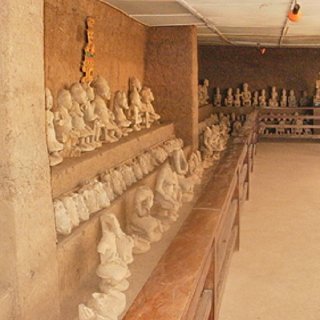MUSEUMS, through their educational services and training, have been successful in empowering women, especially those with special needs. Other segments are police officers wives, market women, career women, women in politics, among others.
Women often face unique socio-economic challenges in the society and a new approach by museum professionals is to make use of cultural heritage as means of boosting the economy of women.
Cultural entrepreneurship is an emerging discipline that examines how cultural products such as arts, theatre, literature and cultural activities like sports, music, food and films events have impacts on the growth of local, national and global economy.
It can be defined as the act of establishing cultural businesses and bringing to market cultural and creative products and services that encompass cultural values which have the potential to generate financial revenues.
It can be a particularly effective approach when considering communities embedded in their culture.
What makes cultural entrepreneurship useful for women is that women are engaged in the production of arts and crafts get to express their culture and ways of life and also earn a living through selling of their products. Generally, women tend to be more involved in craft-making because of cultural gender norms. Making arts and crafts is often a route for self empowerment by women and can become a significant source of income for them.
Museums have greater role to play amid the current harsh economy in the country by involving women in their communities in cultural entrepreneurship. They can involve women in their exhibitions, sales of artistic works and even provide training facilities. Museums can help women in craft production like bead making, soap making, pottery, wood calving, mat making, sculptures, baskets-weaving, drawing etc to improve their production to the international standards and help them sell to their visitors.
Museums can also help support women entrepreneurship by exhibiting creative works, collecting and preserving their products in their collections and providing a space where these products can be sold. Museums can involve women in their activities, using their products in exhibition and publication to highlight creativity and also engaging them in trainings and workshops.
Through the efforts of professionals, museums can help develop women in creative arts to emerge in cultural arts and aesthetics, and add more beauty and economic values to their products.
Museums should play their roles in assisting these women full advantage to showcase their products. They should help showcase their products to the larger society through internet and all other social media. Museum can license women in this category to get their products available and accessible to the tourists in Nigeria and even in the diaspora.
Museum professionals should be aware that one of the efforts to meet the United Nations Sustainable Development Goals (SDGs) is to empower women. Therefore they (museum professionals) should put in all efforts in their capacity to help women entrepreneurship through cultural arts. Museums have evolved to become enablers of community development agents of women empowerment by creating collaborative relationship with local communities.
Museum can create a craft centre or a craft shop which will serve as a rallying point for the empowerment of women in cultural entrepreneurship. It will be a place where they can exhibit and sell their products. By doing this,museum is playing a unique role in merging cultural preservation and a socio-economic objective including promoting the sales of Nigerian culture.


